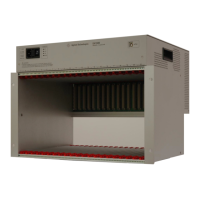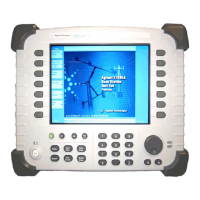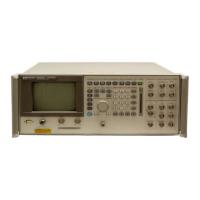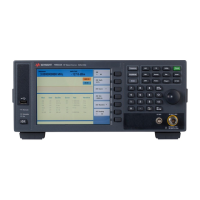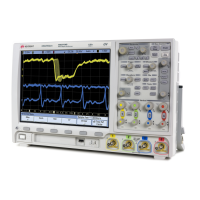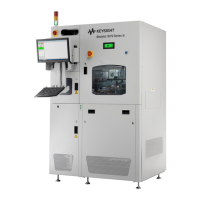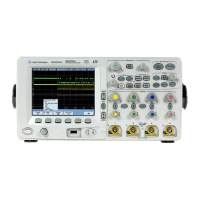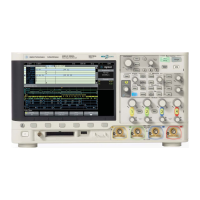Chapter 6 383
Error Messages
Error Queues
SCPI Remote Interface Error Messages
Remote Error Queue
This queue is constructed in a linear first-in/first-out fashion. It can
hold up to 30 error messages. As errors and events are detected, they
are placed in the queue. Unlike the history error queue, errors in this
queue are not overwritten by the latest incoming error messages. If the
queue overflows, the last error in the queue is replaced with the error:
(-350) Queue overflow
When the queue overflows, the early errors remain in the queue, and
the most recent error is discarded. Reading an error from the beginning
of the queue removes that error from the queue, and opens a position at
the end of the queue for a new error, if one is subsequently detected.
The queue overflow message remains in the queue until it is read. If
errors continue to occur as the queue is read, the Queue Overflow
message will be followed by as many of the new messages as will fit in
the remaining queue space. If the queue fills again and another error
occurs, another Queue Overflow message will be placed in the queue.
Querying the Error Queue
The SYSTem:ERRor[:NEXT]? query is a request for the next entry from
the instrument’s error queue. The instrument responds to the query
with the next error number in the queue and its description in the
format:
<error number><error message><context-specific information>
The <error number> is a unique error identifier in the range from
−32768 to 32767. A negative error value indicates a general SCPI
programming error, while a positive error is more instrument specific.
An error value of zero indicates that no error or event has occurred.
Short descriptions of the standard error numbers are described in this
section. The <context-specific information> section of the error
message may contain information which allows you to determine the
exact error and context. For example:
Invalid suffix; FREQuency:CENT 2.0E+5 dBmV
The maximum string length of the <error message> including the
<context-specific information> is 255 characters. The <error
message> will be sent exactly as indicated in this document, including
case. In this example, the context-specific information was the
FREQ:CENT command.
If there has been more than one error, the instrument will respond with
the first one in the queue. Subsequent responses to SYSTem:ERRor?
will return errors until the queue is empty.

